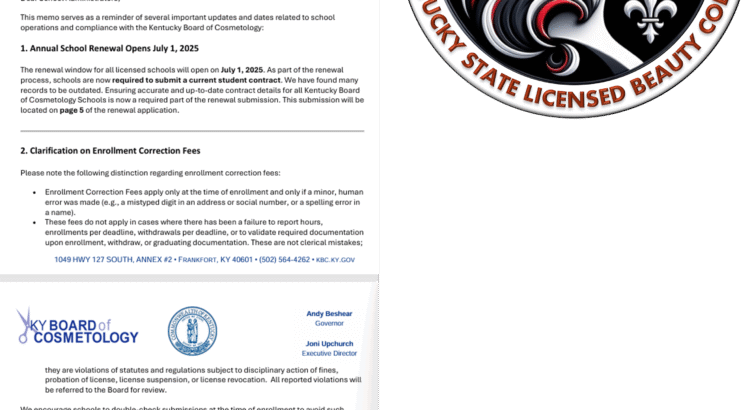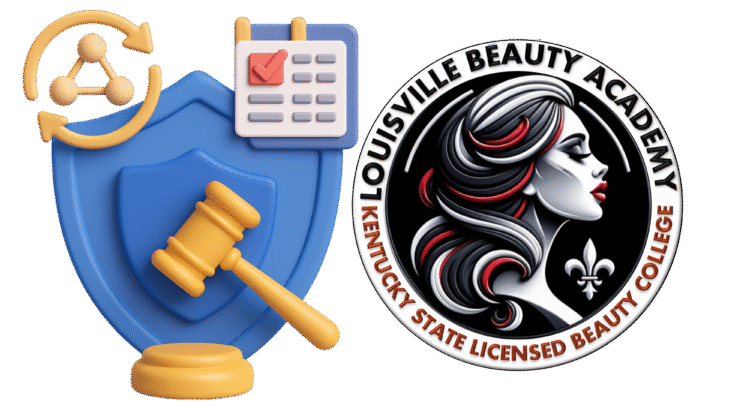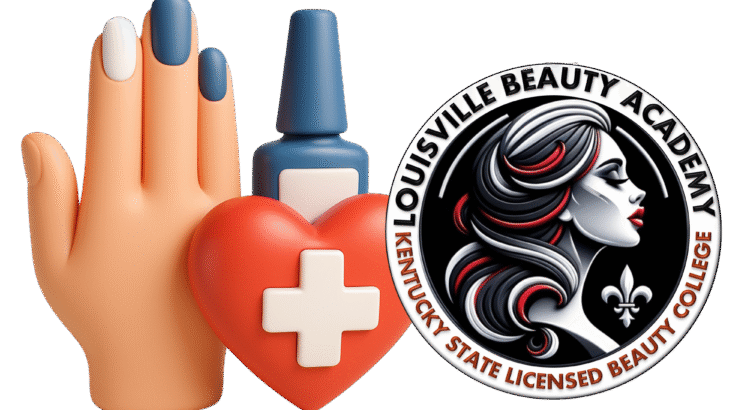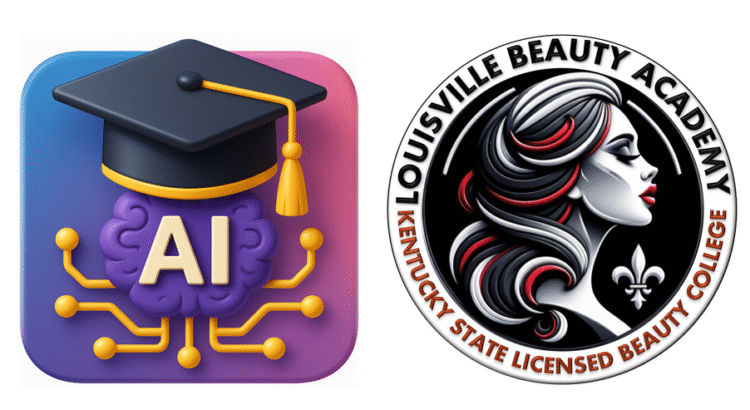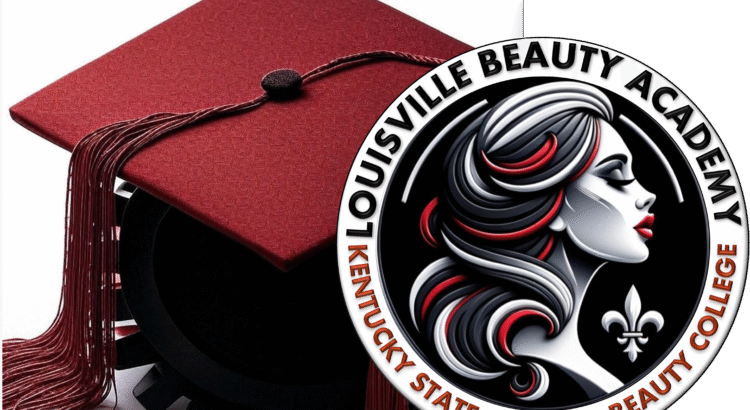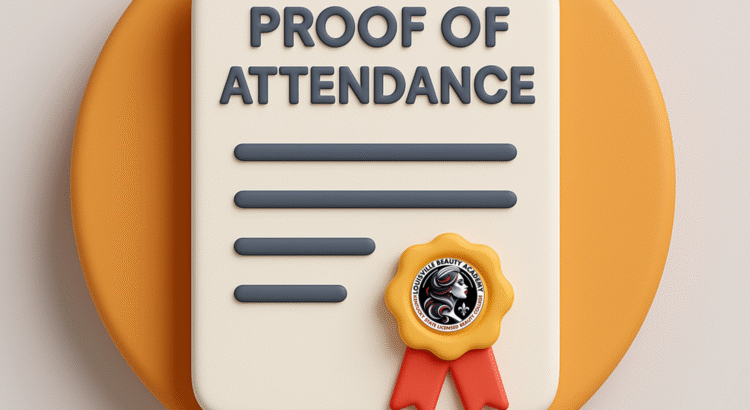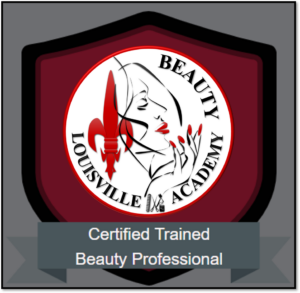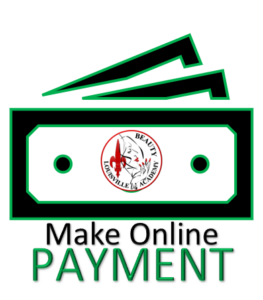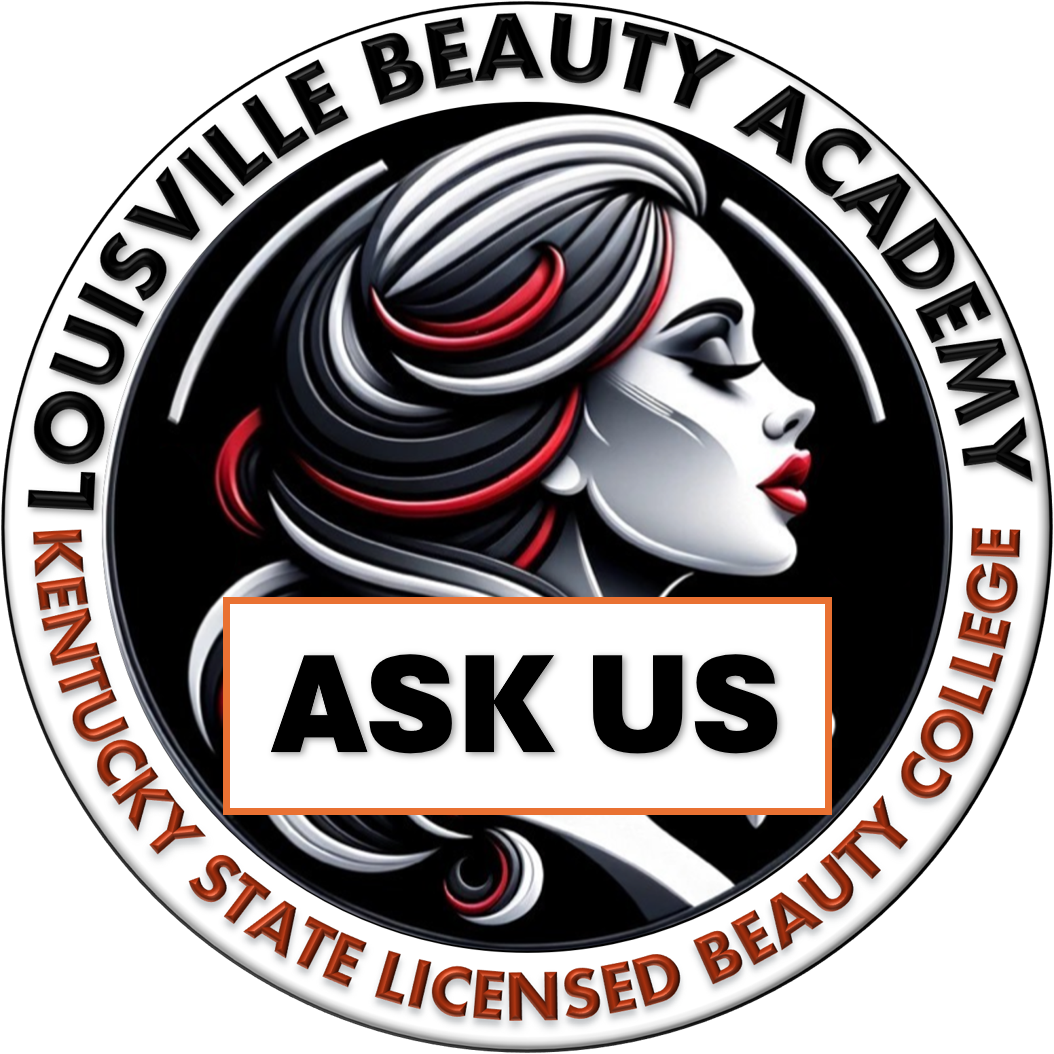The beauty and wellness trade—especially nail technology and esthetics—offers rapid returns on educational investment due to low training costs, short program lengths, and solid wages. In Kentucky and nationally, nail and esthetic programs are measured in months, not years, and tuition is typically a few thousand dollars. By contrast, traditional college degrees cost tens of thousands. This report examines program costs/duration, post‐grad earnings, and ROI timelines for nail techs and estheticians. We draw on government data, industry surveys, and academic research to demonstrate how beauty careers pay off, and show how Louisville Beauty Academy (LBA) further amplifies ROI by drastically reducing tuition and debt.
Educational Costs and Program Duration
Nationwide, nail technician training is quick and affordable. Most state programs require 300–600 clock‐hours (roughly 3–9 months), with tuition often $3,000–$5,000 (before supplies) . For example, BeautySchoolsDirectory reports that in 2024 nail tech school costs typically range $3–5 K . Kentucky law mandates 450 hours for nail licensing . In Kentucky, Southeastern Beauty Academy (Paintsville, KY) offers a 350-hour nail course for $3,750 tuition (additional kit fees apply). LBA’s nail program (450h) is $3,800 , inclusive of discounts (eligible students cut the regular $8,325 program cost to $3,800).
Esthetician programs are longer (to meet skin care licensing hours) and cost more. State requirements vary (Kentucky requires 1,000h ), but many programs run 600–1,000 hours. According to a SoFi career guide, community college esthetic programs cost about $4,000–$6,000, while private schools may charge $6,000–$12,000 . Industry directories note esthetic tuition can exceed $15,000 (including kits) . In Kentucky, ASCP reports the average esthetician program cost is about $9,617 . For context, local examples include Paul Mitchell (Louisville) at $13,500 total for a 750h esthetics course , and PJS College (KY) at $14,268 for 750h . By contrast, LBA’s 750h esthetics program is $6,100 with all discounts. Thus, LBA charges roughly 50–75% less than many peer schools (e.g. Southeastern’s esthetic tuition $7,500 plus $625 kit vs. LBA’s $6,100 total).
In sum, beauty training is short and cheap. Nail tech programs require only a few hundred hours and $3–5K; esthetics ~600–1000h and under $10K in many cases. Kentucky programs typically run 450h (nail) and 1000h (esthetic) . Compared to college (often ~$40K/year), even a $10K beauty program is modest. LBA’s programs (450h nail, 750h esthetic, 1500h cosmetology) cost just $3.8K–$6.3K , drastically below typical tuition.
- Nail tech programs: ~300–600 hours; tuition ~$3–5K . KY requirement: 450h . Ex.: Southeastern KY – 350h for $3,750 ; LBA – 450h for $3,800 .
- Esthetics programs: ~600–1,000 hours; tuition ~$4–12K . KY requirement: 1,000h . Ex.: Southeastern KY – 750h for $7,500 plus $625 kit ; Paul Mitchell Louisville – 750h totalling $13,500 ; LBA – 750h for $6,100 .
- Cosmetology (full beauty): 1,500h; tuition ~$12K–20K. Ex.: Southeastern – $12,400 ; PJS/KY – ~$21,500 ; LBA – $6,250 .
These figures underscore that LBA’s tuition is 50–75% lower than many local/national schools , thanks to heavy discounts. With no student loans needed, LBA students enter the workforce debt-free.
Income Potential (Post-Graduation Earnings)
Career earnings in nail and esthetics are solid, often surpassing many early-career college grads (especially after tips/commissions). According to the U.S. Bureau of Labor Statistics (BLS), the national median wage (2024) is about $16.66/hr ($34,660/yr) for manicurists/pedicurists (nail technicians) and about $19.98/hr ($41,560/yr) for skin care specialists (estheticians) . A survey by the accreditor NACCAS found average annual pay around $33,148 for nail techs and $40,126 for estheticians . Industry sources (SoFi) concur that median esthetician salary is roughly $40.3K/yr , compared to ~$29.2K for a cosmetology license (which includes nail/salon work) .
In Kentucky, wages are comparable. The Kentucky ASCP reports estheticians earn about $36,320/yr (mean $17.46/hr) (tips/commissions not included). BLS state data (May 2022) show Kentucky manicurists average $38,000/yr (mean $18.27/hr) and skin care specialists $35,430/yr (mean $17.03/hr) . These Kentucky figures are slightly below national medians, but still represent living-wage incomes. Notably, salon workers often supplement base wage with tips and product commissions (industry reports suggest tips can add ~20–30% to earnings ), further improving take-home pay.
In summary: median post‐licensing incomes are roughly in the mid-$30Ks to low-$40Ks range . Nail techs typically earn ~$30–35K/year and estheticians ~$38–42K/year (with variation by location and experience) . Even at the lower end, these salaries allow rapid recoup of modest tuition costs.
ROI Timeline (Time to Recoup Education Cost)
Because training is brief and costs are low, beauty students recoup their educational investment in months, not years. A simple “break-even” model illustrates this: dividing tuition by monthly gross salary (annual salary ÷12) yields months to pay back tuition. For example, assuming a conservative salary ~$30,000/year (≈$2,500/month):
- Typical Nail Tech: $4,000 tuition / $2,500 = 1.6 months to break even.
- Typical Esthetician: $10,000 tuition / ($40,000/12) ≈ $10,000 / $3,333 = 3 months.
- Typical Cosmetology: $16,000 tuition / $2,500 ≈ 6.4 months.
By contrast, at LBA:
- LBA Nail Technician ($3,800 tuition, 450h): ~$30K salary → ~1.5 months to recoup.
- LBA Esthetician ($6,100 tuition, 750h): ~$40K salary → ~1.8 months to recoup.
These examples assume paying tuition up front or in interest-free installments, with graduates then earning immediately at full wage. Even factoring taxes or living expenses, the point is that earnings quickly exceed education cost.
Studies highlight how modest tuition yields outsized ROI. The Institute for Justice found that beauty programs cost over $16,000 on average (often with ~$7,100 debt) while graduates earn only ~$26,000/yr . At those rates, many former cosmetology students struggle to repay loans. In contrast, LBA’s dramatically lower cost (and no loans) flips the picture: the same salary turns a likely negative ROI into a highly positive one. One analysis notes technical trade certificates “have a higher payoff than the typical bachelor’s degree” . Indeed, a $6K investment paid back in ~2 months yields an ROI far exceeding most college programs.
It is instructive to compare break-even times explicitly. For example, at a $30K annual wage:
- A $6,000 tuition (LBA-level) is earned back in ~2.4 months.
- A $12,000 tuition (typical full beauty) takes ~4.8 months.
- A $16,000 tuition (high-end program) takes ~6.4 months.
Thus LBA’s lower tuition speeds ROI 2–3× faster.
Moreover, LBA’s zero-debt policy eliminates loan burdens. Beauty schools often rely on student loans: IJ reports average borrowing ~$7,100 per cosmetology student , and The Century Foundation found average cosmetology debt ~$10,200 . LBA students graduate without such debt, meaning 100% of their earnings go into savings or living expenses rather than loan payments. For example, a graduate who might otherwise owe $8K at 5% interest can instead pocket that $100–$150/month as pure income, further boosting ROI.
Louisville Beauty Academy vs. Other Programs
LBA’s model dramatically boosts ROI relative to conventional schools. Its tuition is roughly half or less of competitors: e.g., Cosmetology at LBA is $6,250 for 1500h , vs. Southeastern Beauty Academy’s $12,400 (50% reduction). Esthetics at LBA is $6,100 (750h) , whereas Paul Mitchell charges $13,500 (750h) (55% less), and PJS ~$14,268 (750h) (57% less). Nail technology at LBA is $3,800 (450h) ; Southeastern’s 350h course is $3,750 , but at far fewer hours (LBA provides 100h more training for the same cost).
Because of these savings, an LBA student reclaims tuition in weeks rather than months compared to peers. For instance, breaking even on a $3,800 LBA nail program takes about 6 weeks of gross pay (~$2,500/mo) versus ~1.5 months for a $4,000 program. On an $6,100 LBA esthetics program, break-even is ~1.8 months, versus ~4 months for a $12,000 program. In other words, LBA students recover tuition 2–3 times faster than students of higher-priced schools.
Finally, LBA’s graduates enter the workforce debt-free, an increasingly rare advantage. With no student loans, their monthly cash flow is significantly higher. In a concrete model: a graduate earning $2,500/mo who owes $10,000 at 5% interest would pay ~$106/month on loans for 10 years. Without that payment (as at LBA), it’s akin to receiving an extra $1,270/year – a meaningful boost in effective take-home pay and ROI.
Conclusion
Trade careers in nail and esthetics represent an excellent ROI on education. Training is short (months), costs are low (often <$10K), and wages are respectable (mid-$30Ks). As a result, most beauty students earn back their tuition in just a few months of work. For example, a $6K cost at a $36K salary yields payback under 3 months. By contrast, college graduates with 4-year degrees often spend years recouping six-figure tuition. Studies confirm this pattern: certificates in the skilled trades routinely outrank average bachelor’s degrees in ROI , while beauty programs heavily subsidized by loans often leave students worse off .
The data show nail techs and estheticians can swiftly translate a small training investment into income. LBA’s model amplifies this effect: 50–75% lower tuition and zero debt mean LBA grads enjoy ROI 2–3× higher than usual. In effect, LBA students enter high-demand jobs without the weight of debt, recoup costs almost immediately, and can begin saving or investing years earlier than traditional trade school students. All sources consistently indicate that, among US career programs, the beauty trades deliver some of the fastest, surest returns on educational investment .
References
- Associated Skin Care Professionals. (2025). Kentucky Esthetician Schools (online directory). Retrieved June 2025, from Kentucky ASCP: Kentucky esthetician schools webpage .
- BeautySchoolsDirectory.com. (2024). Nail Tech School: Cost, Course Length, and Training Requirements. Retrieved June 2025, from BeautySchoolsDirectory (online article) .
- Bureau of Labor Statistics. (2024). Occupational Outlook Handbook: Manicurists and Pedicurists. U.S. Dept. of Labor. Retrieved 2025, from BLS OOH (Manicurists & Pedicurists) .
- Bureau of Labor Statistics. (2024). Occupational Outlook Handbook: Skincare Specialists. U.S. Dept. of Labor. Retrieved 2025, from BLS OOH (Skin care specialists) .
- Bureau of Labor Statistics. (2022). Kentucky – May 2022 State Occupational Employment and Wage Estimates. Retrieved 2025, from BLS State OEWS (Kentucky) .
- Institute for Justice. (2021, July 22). New report uncovers the shocking student debt burden beauty school students take on. Arlington, VA. [Press release summarizing IJ study] .
- Louisville Beauty Academy. (2025). Discover Our Debt-Free Beauty Education Programs: Affordable Package Cost, Incentives, and Interest-Free Payment Plans. Louisville, KY: LBA (official site) .
- Paul Mitchell The School – Louisville. (2025). Esthetics Program – Tuition and Costs. Louisville, KY. Retrieved 2025, from school’s website .
- PJS College of Cosmetology. (2025). Consumer Information (Loan Debt and Cost of Attendance). Bowling Green, KY (online disclosure) .
- Southeastern Beauty Academy. (2025). Tuition and Fees. Paintsville, KY (official site) .
- The Century Foundation. (2022). Fast, C., Granville, P., & Moultrie, T. Cosmetology Training Needs a Make-Over. [Higher Ed policy report]. Retrieved 2025, from TCF: Carolyn Fast, et al. report (p.127–132) .
- SoFi, Inc. (2024, June 3). Ndoni, K. Paying for Cosmetology or Esthetician School. SoFi Learn (online guide) .
- beautyschooledu.org. (2025). Beautician Salary: Cosmetology, Esthetician, Nail Technician, Makeup Artist, Barber. [Salary guide]. Retrieved 2025, from BeautyschoolsEdu .
- Cooper, P. (2024). Does College Pay Off? A Comprehensive Return On Investment Analysis. Foundation for Research on Equal Opportunity (FREEOPP). [Executive summary and report] .
- Cosmetology Guru. (2025). 2025 Cosmetology ROI Report: Best and Worst States for Beauty School Costs. [Online report; key findings summary] .


